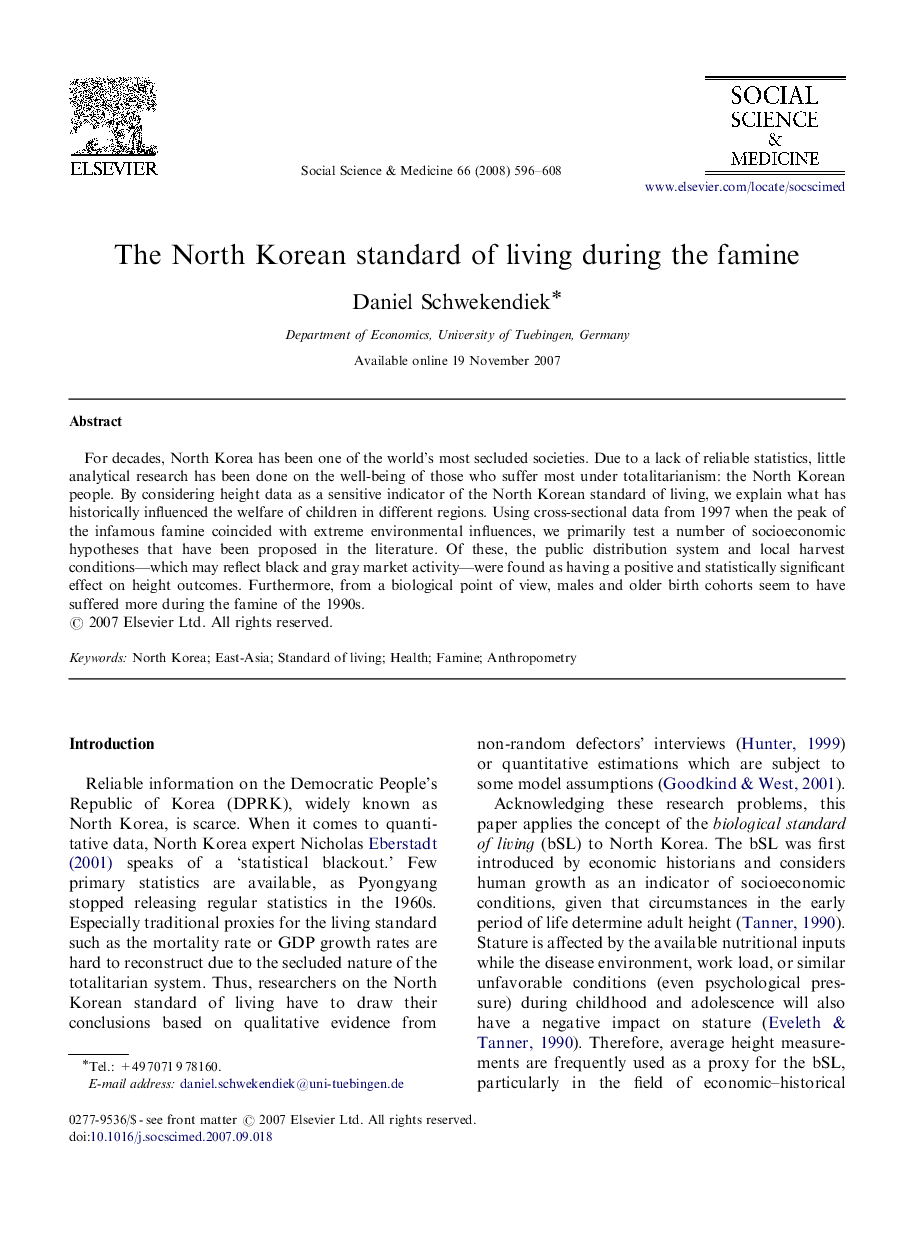| Article ID | Journal | Published Year | Pages | File Type |
|---|---|---|---|---|
| 953560 | Social Science & Medicine | 2008 | 13 Pages |
For decades, North Korea has been one of the world's most secluded societies. Due to a lack of reliable statistics, little analytical research has been done on the well-being of those who suffer most under totalitarianism: the North Korean people. By considering height data as a sensitive indicator of the North Korean standard of living, we explain what has historically influenced the welfare of children in different regions. Using cross-sectional data from 1997 when the peak of the infamous famine coincided with extreme environmental influences, we primarily test a number of socioeconomic hypotheses that have been proposed in the literature. Of these, the public distribution system and local harvest conditions—which may reflect black and gray market activity—were found as having a positive and statistically significant effect on height outcomes. Furthermore, from a biological point of view, males and older birth cohorts seem to have suffered more during the famine of the 1990s.
